Explore colonial Fort Kochi is about the most famous neighbourhood in the city of Kochi. In the 16th century the Portuguese built a fort in this area and it was later destroyed by the Dutch. The area is popular for its Portuguese, British and Dutch colonial architecture. Most iconic are the bamboo Chinese Fishing nets at Vasco Da Gama Square. Fort Kochi is not only a cultural experience. There are many great restaurants to eat fresh fish, enjoy a good old European meal, have a decent cup(s) of French pressed coffee and the chocolate cakes with ice cream are legendary.
The best option to explore Fort Kochi is to walk around. Start at the Indo Portuguese Museum and walk north to Fort Kochi Beach. The area is notorious for the annoying rickshaw drivers. If you decide to get a rickshaw make clear to the driver you don’t want to be dropped off at any shops or restaurants. They will definitely try to take you to their ‘friends’ shop or restaurant. Don’t be persuaded and tell them you are not interested.
Table of Contents
Indo Portuguese Museum
The Indo Portuguese Museum is a small museum located in the garden of the Bishop’s House. The museum displays several objects of India’s earliest Catholic communities like crosses and altarpieces. Some people find the garden and the Bishop’s House more interesting than the museum itself. If you have some time to kill it is nice to take a stroll and visit the museum.

Beach walkway in Fort Kochi
You can walk along the coastal line from Fort Kochi Beach until the boat jetty. A few years ago it was possible to walk further than Fort Kochi Beach but after a storm the walkway was destroyed and it is not yet restored. On Google Maps you will notice there are two beaches; Fort Kochi Beach and Mahatma Gandhi Beach. The last few decades water levels have raised and the two beaches disappeared. Thirty years ago Fort Kochi Beach was a huge beach and you had to walk a few hundreds meters to get to the sea. Behind Fort Kochi Beach is the Dutch Cemetery.
If you walk further north you see the ruins of the Gunnery Fort of Emmanuel. The cannon is an original cannon from the 16th century when the Portuguese built the defence fort. After this point on the left side is Mahatma Gandhi Beach, well what is left of it anyway. When you arrive at the Chinese Fishing nets you have reached Vasco Da Gama Square. Along the beach walkway you have a lot of street vendors selling souvenirs, food, snacks, chai and it ends at the Fish Markets opposite of Jawahar Park.
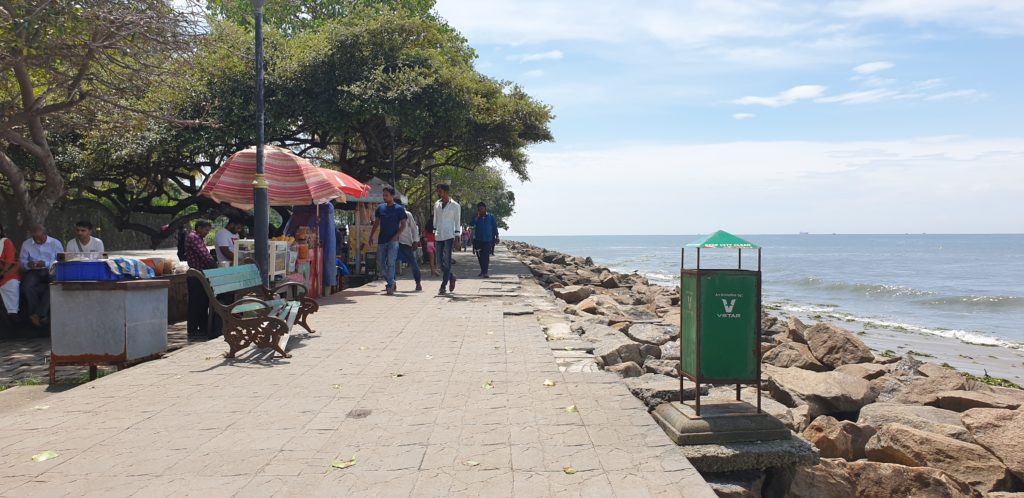
Dutch Cemetery
The Dutch cemetery is almost 300 years old and the graves are from Dutch traders and soldiers. The gate is normally closed so it is not possible to walk around on the cemetery itself. However, the story goes it is possible to visit on request at the St. Francis Church in Fort Kochi. They also have all the records who is buried there. It is believed that this cemetery is oldest in the country.
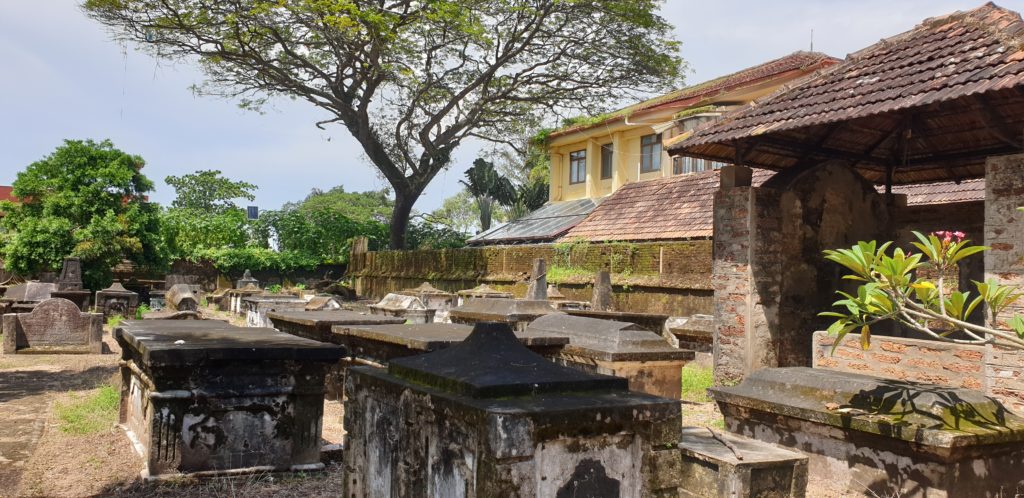
Chinese Fishing Nets
The legend
tells that the a famous Chinese explorer Zheng He built the Chinese Fishing
Nets for the fisherman in Kochi some 500 years ago. After he left the fisherman
still used this technique and it was used at many coastal places in Kerala. The
locals call the nets Cheenvala and it attracted visitors in Fort Kochi for
centuries. Even today the fisherman still use the nets and the fish is sold
directly at Vasco Da Gama Square. The structure is made of bamboo and
teakpoles. At the square you can watch the fisherman and see how the nets are
pulled up by several men.
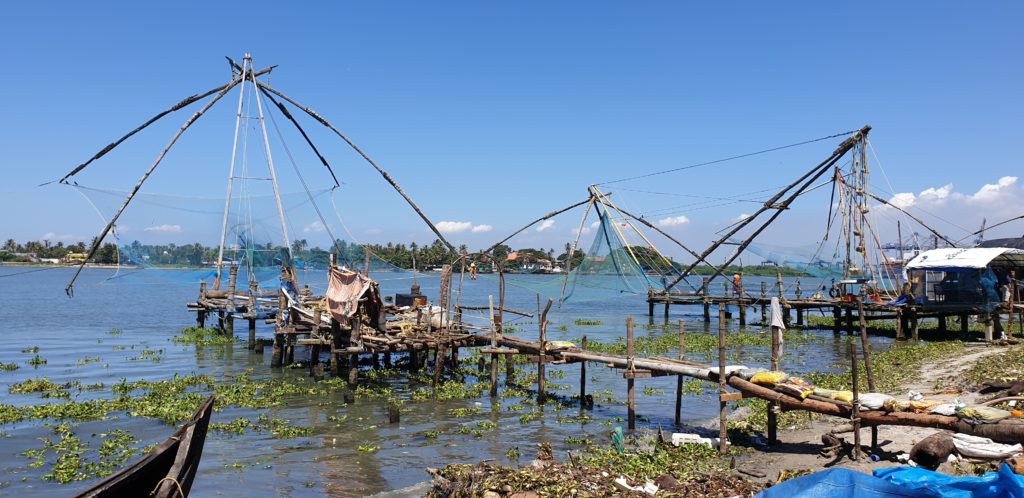
David Hall Art Café CGH Earth
There are many small art galleries in Fort Kochi. The one I like is the David Hall Art Café CGH Earth. The gallery is housed in a 17th century Dutch colonial bungalow and at the back there is a well maintained green garden with a café. At the time I visited they had some amazing art pieces displayed. I particularly like the animal paintings. They also had a collection of small paintings made by local children. At the time of visiting there was a local men selling his own art work and if you are lucky you can see him paint his own artwork. At the café you can go for a tasty European lunch and enjoy the peaceful green garden.
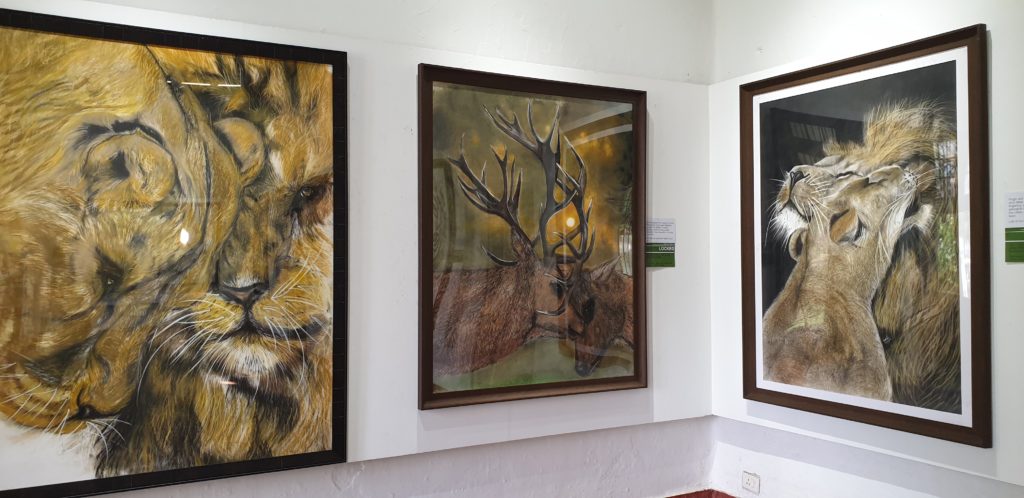
St. Francis CSI Church
The St. Francis Church is famous because the explorer Vasco Da Gama was originally buried here in 1524. His remains were taken back to Portugal 14 years later. Today you can still see the place were he was buried. The church has Dutch and Portuguese architectural elements. The many tombstones are engraved in the Old Dutch language. I’m Dutch and it is fascinating to read the old language first hand.
The first church was constructed with mud and wood and later on the Portuguese, Dutch and the British made improvements and adjustments. Since 1949 this church is a part of the Church of South India.
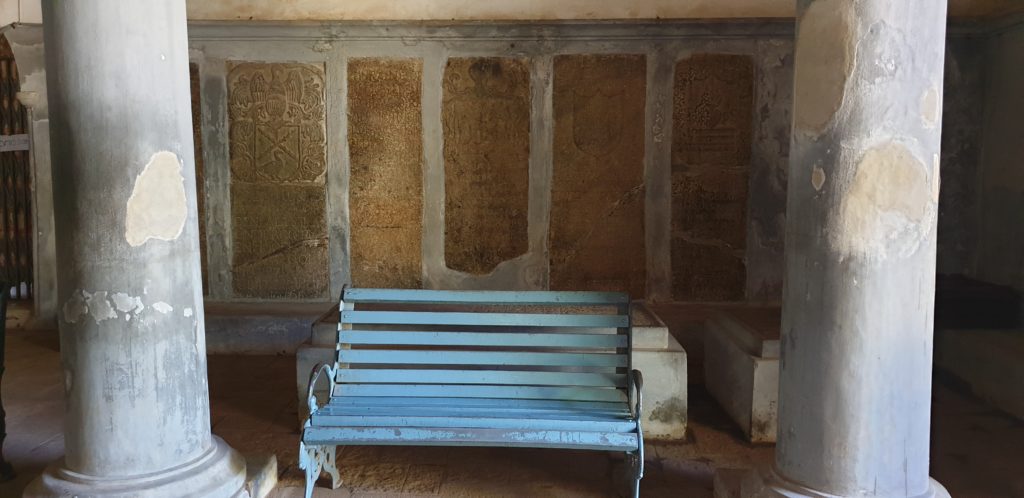
Jawahar Park
The Jawahar park is a fascinating area to watch the locals having a chat, drinking chai, doing their exercises, take a rest and were children go play in the late afternoon. The park comes to live at night when vendors open up their street stalls at Vasco da Gama square.
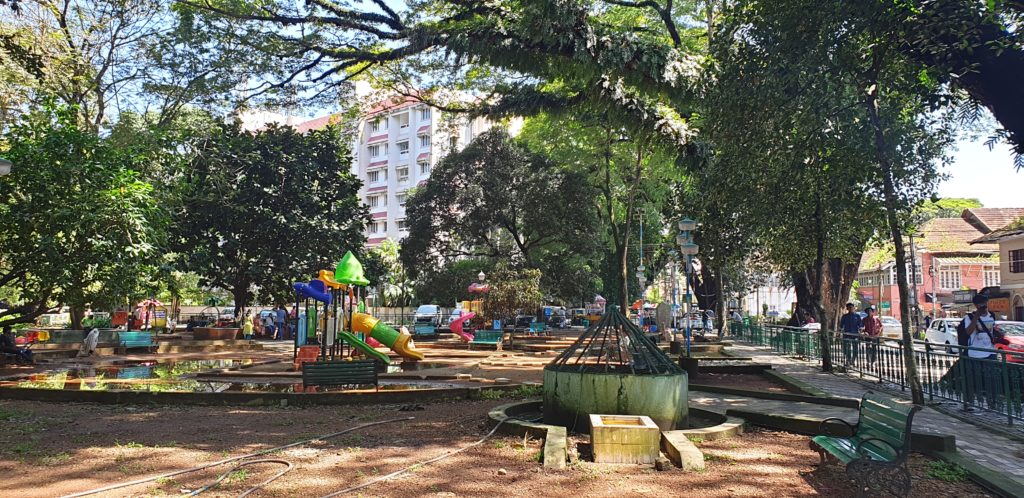
Santa Cruz Basilica
The Santa Cruz Basilica is one of the eight basilicas in India. The cathedral is more than 500 years old. When the Dutch arrived in 1663 they almost destroyed all Catholic monuments. Luckily, the Dutch used the Santa Cruz Cathedral as an armoury and was not destroyed. Unfortunately, the British in 1975 were less careful and one decorative granite pillar was destroyed and is now preserved as a relic. The basilica has a mix of Indo-European and Gothic architecture. Make sure to see the basilica at night when the lights in the basilica are turned on. The red coloured glass is an eye catcher at night and the white exterior highlights the red glow.
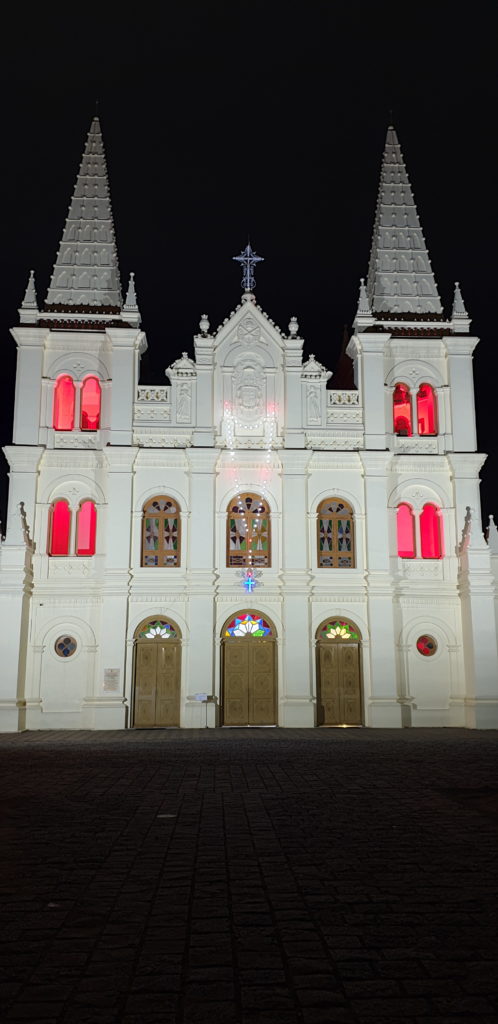
Mattancherry
The western part of Fort Kochi is Mattancherry. Once it was vibrant centre of trade and people from all over the world came across the sea and arrived in Mattancherry. I don’t know the reason but Mattancherry is often referred to as Jew Town. The area is known for the many different ethnic identities living among each other. The churches, mosques, temples and the synagogue are located in this densely built neighbourhood.
A few interesting places to visit are the Dutch Palace, the antique shops of Jew Town, the Jewish cemetery, the Spice Market of Jew Town, the Thirumala Devaswom Temple and the St. George Orthodox Koonan Kurish Church. Go for a walk around Palace Road, New Road and Mass road and see how the social and cultural identities change every few hundred meters.

Check out the photos of Kochi and get an idea of what this vibrant neighbourhood looks like. Perhaps you are looking for an authentic and boutique stay in Fort Kochi? Feel free to contact me if you need help planning your trip to Kochi, Kerala or other beautiful places in India.
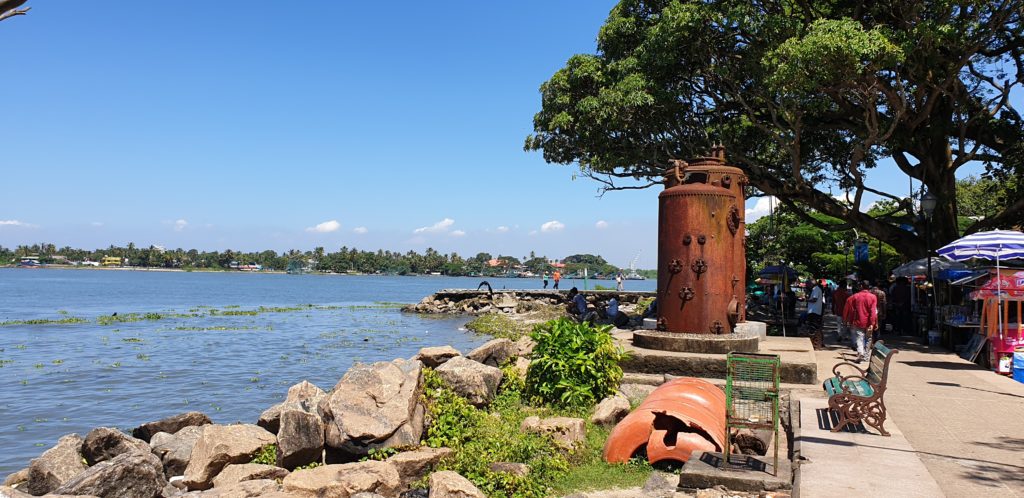
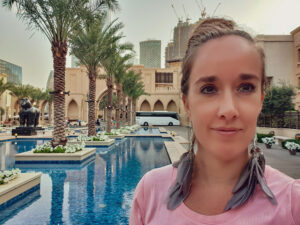
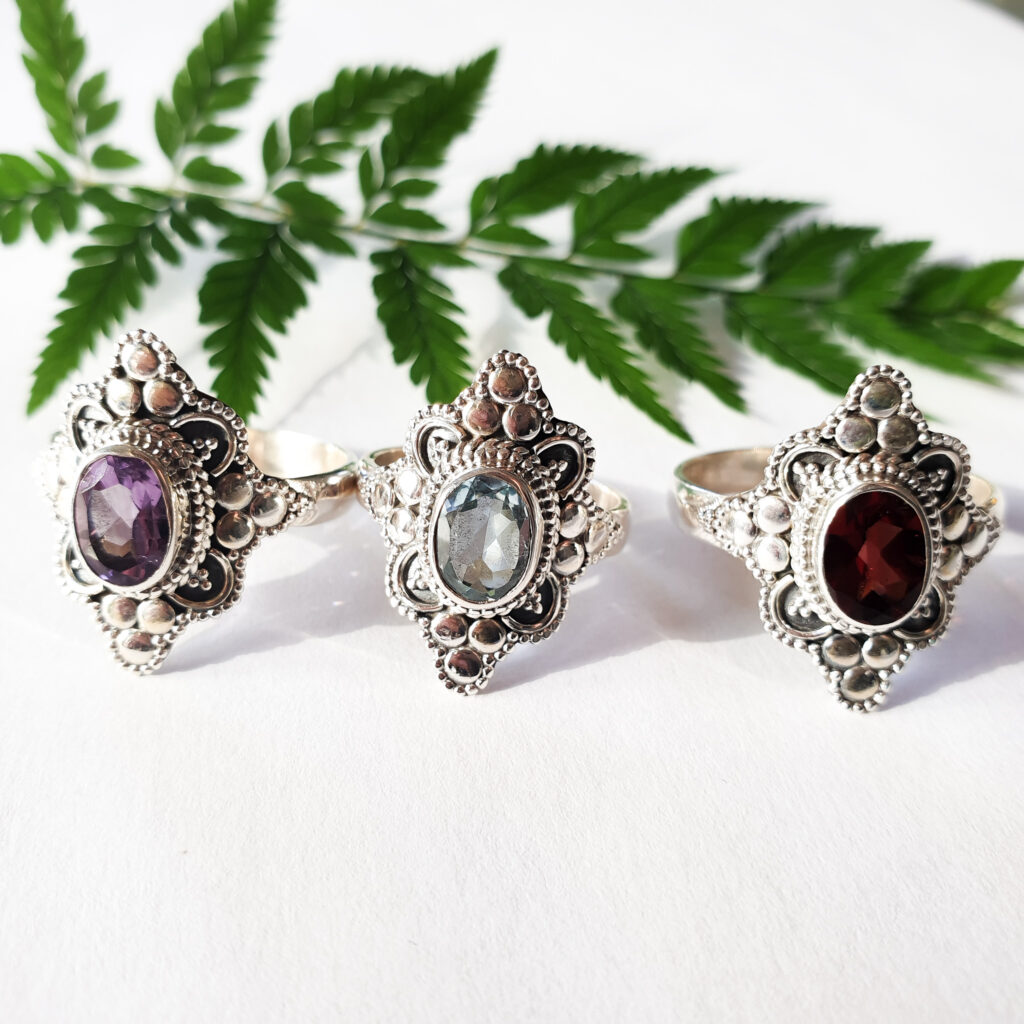
This Post Has 2 Comments
I love Kochi. I spend a few weeks there and I love to go back some day. Thank you for sharing.
Liza
Thank you Liza for your comment. Kochi is indeed a lovely place to visit. Hopefully we can visit India again soon.
Adriana